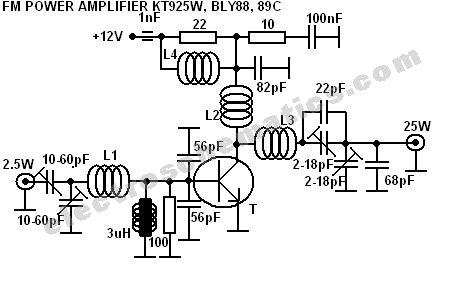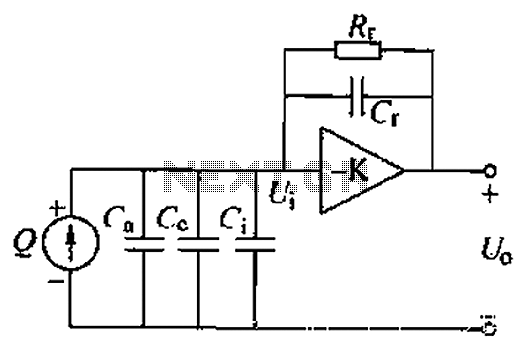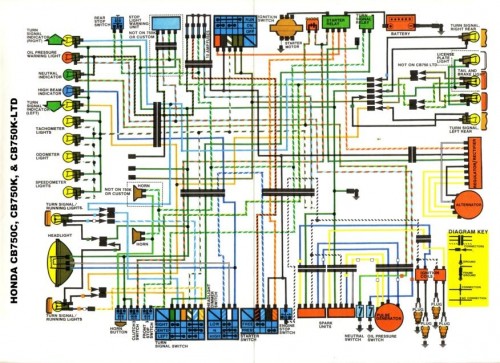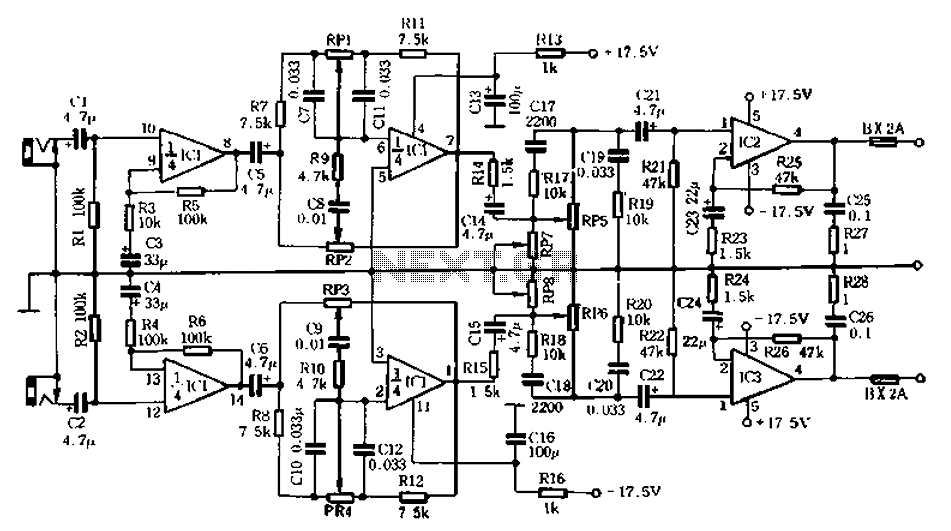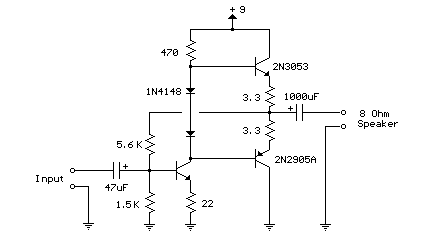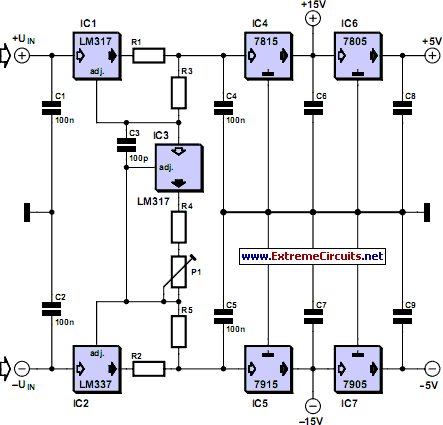
Stable amplification 1001 times chopper amplifier
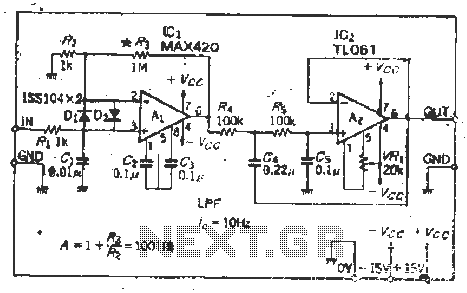
The MAX420 is a monolithic chopper operational amplifier with a supply voltage of 15 V (ICL76s0 supply voltage of 15 V), exhibiting favorable input characteristics. The input offset voltage is 1 mV. Additional specifications include an input drift of 0.02 µV/°C, input bias current of 10 pA, input resistance of 10^12 Ω, and an open-loop gain of 100 dB, measured at 25 °C. These parameters differ from those of a standard differential amplifier. However, the amplifier demonstrates a relatively poor AC conversion characteristic, with a slew rate of 0.5 V/µs and a gain-bandwidth product of 500 kHz. The input conversion noise is measured in the DC to 10 Hz narrowband, with a level of 1 µV. A low-pass filter is required for optimal performance.
The MAX420 operational amplifier is designed for precision applications where low input offset voltage and low bias current are critical. The monolithic chopper architecture allows for improved performance over traditional operational amplifiers, particularly in terms of drift and noise characteristics. The input offset voltage of 1 mV ensures minimal error in signal processing, making it suitable for high-accuracy applications.
The input drift of 0.02 µV/°C indicates that the offset voltage remains stable across a range of temperatures, which is essential for maintaining performance in varying environmental conditions. The exceptionally low input bias current of 10 pA allows the MAX420 to be used in high-impedance circuits without significantly affecting the signal being measured.
With an input resistance of 10^12 Ω, the MAX420 can interface effectively with high-impedance sources, ensuring that the measurement system does not load the signal being processed. The open-loop gain of 100 dB provides substantial amplification capabilities, making the device suitable for applications requiring significant signal enhancement.
Despite its advantages, the MAX420 exhibits a limited AC conversion characteristic, indicated by a slew rate of 0.5 V/µs. This constraint may limit its use in applications with rapidly changing signals. The gain-bandwidth product of 500 kHz suggests that the amplifier can maintain its gain across a wide frequency range, but careful consideration is required when designing circuits that operate near this bandwidth.
The input conversion noise level of 1 µV in the DC to 10 Hz range highlights the importance of using filtering techniques to minimize noise interference in sensitive applications. A low-pass filter is recommended to ensure that high-frequency noise does not affect the performance of the amplifier, particularly in precision measurement systems.
Overall, the MAX420 operational amplifier is a versatile component suitable for a range of precision applications, offering low noise, low drift, and high input impedance, while requiring careful design considerations for AC performance.MAX420 is a monolithic chopper OP amplifier supply voltage is 15 V (ICL76s0 supply voltage of i5V), with good input characteristics. Input offset voltage l V. One input drift 0. 02 FtV / oC ', _, input bias current lOpAtr ,, input resistance loloQ, open loop gain isodB, these are 25 C standard parameters, ordinary differential amplifier is not so the parameter value. Instead, it's not very good opening characteristic AC conversion rate of 0. 5V / Us, GB volume of sookHz, the input conversion noise is in DC ~ 10Hz narrowband taken off, the level of 1 - iuv, - , (.
,,, 1 plus low-pass filter for the crossing is a prerequisite.
The MAX420 operational amplifier is designed for precision applications where low input offset voltage and low bias current are critical. The monolithic chopper architecture allows for improved performance over traditional operational amplifiers, particularly in terms of drift and noise characteristics. The input offset voltage of 1 mV ensures minimal error in signal processing, making it suitable for high-accuracy applications.
The input drift of 0.02 µV/°C indicates that the offset voltage remains stable across a range of temperatures, which is essential for maintaining performance in varying environmental conditions. The exceptionally low input bias current of 10 pA allows the MAX420 to be used in high-impedance circuits without significantly affecting the signal being measured.
With an input resistance of 10^12 Ω, the MAX420 can interface effectively with high-impedance sources, ensuring that the measurement system does not load the signal being processed. The open-loop gain of 100 dB provides substantial amplification capabilities, making the device suitable for applications requiring significant signal enhancement.
Despite its advantages, the MAX420 exhibits a limited AC conversion characteristic, indicated by a slew rate of 0.5 V/µs. This constraint may limit its use in applications with rapidly changing signals. The gain-bandwidth product of 500 kHz suggests that the amplifier can maintain its gain across a wide frequency range, but careful consideration is required when designing circuits that operate near this bandwidth.
The input conversion noise level of 1 µV in the DC to 10 Hz range highlights the importance of using filtering techniques to minimize noise interference in sensitive applications. A low-pass filter is recommended to ensure that high-frequency noise does not affect the performance of the amplifier, particularly in precision measurement systems.
Overall, the MAX420 operational amplifier is a versatile component suitable for a range of precision applications, offering low noise, low drift, and high input impedance, while requiring careful design considerations for AC performance.MAX420 is a monolithic chopper OP amplifier supply voltage is 15 V (ICL76s0 supply voltage of i5V), with good input characteristics. Input offset voltage l V. One input drift 0. 02 FtV / oC ', _, input bias current lOpAtr ,, input resistance loloQ, open loop gain isodB, these are 25 C standard parameters, ordinary differential amplifier is not so the parameter value. Instead, it's not very good opening characteristic AC conversion rate of 0. 5V / Us, GB volume of sookHz, the input conversion noise is in DC ~ 10Hz narrowband taken off, the level of 1 - iuv, - , (.
,,, 1 plus low-pass filter for the crossing is a prerequisite.
